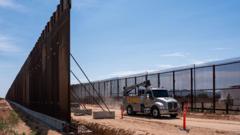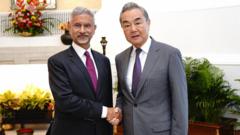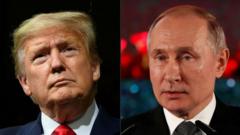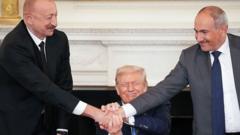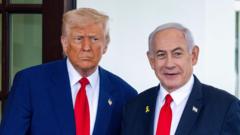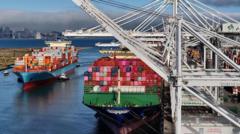While President Trump touts unprecedented levels of investment as a result of his policies, analysts suggest that many reported commitments predate his administration and that real economic growth may be slower than advertised, revealing significant discrepancies between claims and reality.
Unpacking Trump's Investment Claims: What Lies Beneath the Numbers
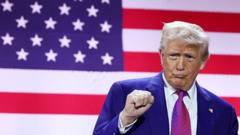
Unpacking Trump's Investment Claims: What Lies Beneath the Numbers
The claims of over $12 trillion in business investments during Trump's presidency are scrutinized against the reality of economic data and corporate intentions.
In a recent proclamation, President Donald Trump asserted that more than $12 trillion in business investments had been “practically committed” since he took office, referencing his policies of tax cuts, deregulation, and tariffs as key contributors to this remarkable figure. If accurate, this would surpass the $4 trillion in private investment reported in the U.S. over the last year. The question now is whether this surge in investment is reshaping the economic landscape or simply a rhetorical flourish.
Early in Trump's presidency, data around business investment is still limited, with the government only releasing statistics quarterly. Reports from January to March showed a notable rise in business investment but economists cautioned that this spike could be misleading, influenced by previous trends such as an imminent strike from Boeing.
Nick Bloom, an economist at Stanford University, commented on the preliminary nature of investment data, suggesting that ongoing uncertainties surrounding policy changes, especially with tariffs in play, could be dampening new ventures. A noteworthy instance is Roche, which announced a $50 billion investment plan in April; however, many projects within that commitment were already in development prior to Trump's election, prompting concerns over the stability of future plans.
In his efforts to showcase investment confidence, Trump cites commitments from major corporations, including Apple and Hyundai. However, a check with the White House's figures shows that total new investments are listed at around $5.3 trillion—yet even that is misleading. A significant portion comprises projects well in the pipeline before Trump took office, diluting the impact of any new economic policies. For example, Corning's $1.5 billion investment included $900 million that had been announced prior to early 2024.
Goldman Sachs further examined the actual new investments connected to announcements, estimating the figure at roughly $134 billion, which could drop to as low as $30 billion when accounting for the uncertainty of proposed projects. It raises concerns about the veracity of claims that have garnered substantial media attention.
When asked about discrepancies, White House spokesperson Kush Desai dismissed the critiques, asserting that Trump's multifaceted strategy was indeed effective in driving investment, despite skepticism from the financial community.
Several corporations contacted for clarification were reticent, often redirecting inquiries to previous public statements that underline their commitment to investing. Analysts note that companies might feel incentivized to inflate their public announcements as a means of gaining favor with the administration.
Martin Chorzempa, an economist at the Peterson Institute, illustrated this argument, suggesting that companies release inflated investment figures to align with the administration's robust economic narrative while retaining flexibility regarding their commitments.
Even while acknowledging that Trump’s policies have nudged firms toward domestic manufacturing, particularly in pharmaceuticals, the long-term implications of tariffs remain uncertain. Stephen Farrelly from ING indicates that the sector's growth trajectory was already established prior to Trump’s intervention, and that recent investments may not significantly change the market dynamics.
Economists such as German Gutierrez highlight that the core issue driving lower investment levels lies in industry consolidation, with fewer firms controlling significant market share—a situation tariffs alone may not rectify. They argue that more comprehensive approaches are necessary to invigorate investment across sectors such as machinery and plant construction.
In conclusion, while Trump's ambition to boost domestic investment reflects a broader goal, many attribute the current investment landscape's stagnation to deeper infrastructural issues and market uncertainties that go beyond tariff impacts. As investment responses may unfold unevenly, further empirical evidence will be key to understanding the full scope of Trump's economic legacy.

